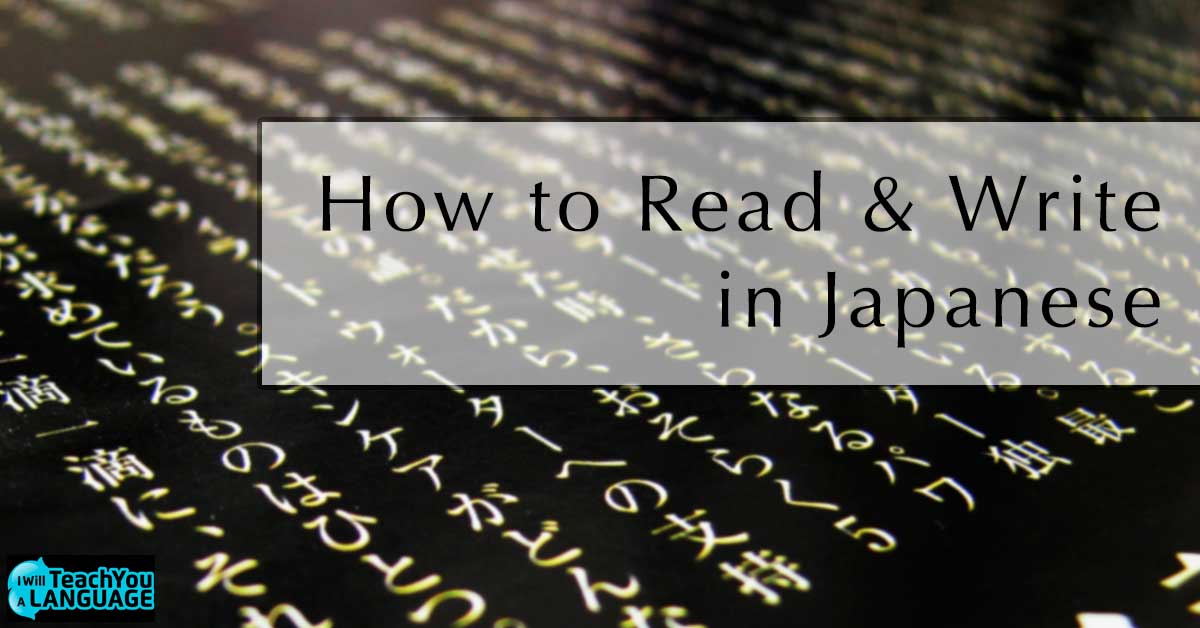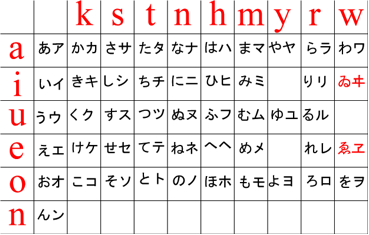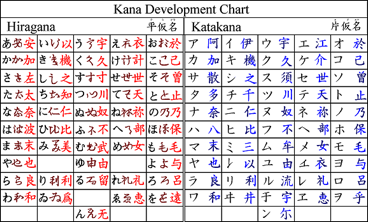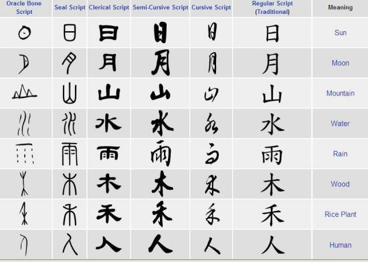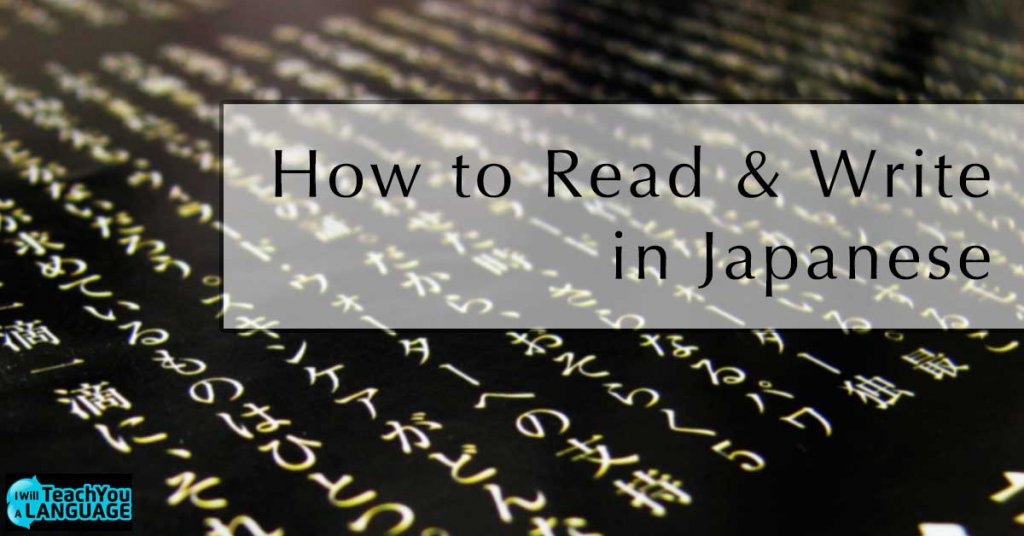
Do you want to learn how to write in Japanese, but feel confused or intimidated by the script?
This post will break it all down for you, in a step-by-step guide to reading and writing skills this beautiful language.
I remember when I first started learning Japanese and how daunting the writing system seemed. I even wondered whether I could get away without learning the script altogether and just sticking with romaji (writing Japanese with the roman letters).
I’m glad I didn’t.
If you’re serious about learning Japanese, you have to get to grips with the script sooner or later. If you don’t, you won’t be able to read or write anything useful, and that’s no way to learn a language.
The good news is that it isn’t as hard as you think. And I’ve teamed up with my friend Luca Toma (who’s also a Japanese coach) to bring you this comprehensive guide to reading and writing Japanese.
Pro Tip
By the way, if you want to learn Japanese fast (including how to write in Japanese) and have fun while doing it, my top recommendation is Japanese Uncovered which teaches you through StoryLearning®.
With Japanese Uncovered you’ll use my unique StoryLearning® method to learn Japanese naturally through story… not rules. It’s as fun as it is effective.
If you’re ready to get started, click here for a 7-day FREE trial.
Don't have time to read this now? Click here to download a free PDF of the article.
If you have a friend who’s learning how to write in Japanese, you might like to share it with them. Now, let’s get stuck in…
Table of Contents

One Language, Two Systems, Three Scripts
If you are a complete beginner, Japanese writing may appear just like Chinese.
But if you look at it more carefully you'll notice that it doesn’t just contain complex Chinese characters… there are lots of simpler ones too.
Take a look.
それでも、日本人の食生活も急速に変化してきています。ハンバーグやカレーライスは子供に人気がありますし、都会では、イタリア料理、東南アジア料理、多国籍料理などを出すエスニック料理店がどんどん増えています。
Nevertheless, the eating habits of Japanese people are also rapidly changing. Hamburgers and curry rice are popular with children. In cities, ethnic restaurants serving Italian cuisine, Southeast Asian cuisine and multi-national cuisine keep increasing more and more.
(Source: “Japan: Then and Now”, 2001, p. 62-63)
As you can see from this sample, within one Japanese text there are actually three different scripts intertwined. We’ve colour coded them to help you tell them apart.
(What’s really interesting is the different types of words – parts of speech – represented by each colour – it tells you a lot about what you use each of the three scripts for.)
Can you see the contrast between complex characters (orange) and simpler ones (blue and green)?
The complex characters are called kanji (漢字 lit. Chinese characters) and were borrowed from Chinese. They are what’s called a ‘logographic system' in which each symbol corresponds to a block of meaning (食 ‘to eat', 南 ‘south', 国 ‘country').
Each kanji also has its own pronunciation, which has to be learnt – you can’t “read” an unknown kanji like you could an unknown word in English.
Luckily, the other two sets of characters are simpler!
Those in blue above are called hiragana and those in green are called katakana. Katakana and hiragana are both examples of ‘syllabic systems', and unlike the kanji, each character corresponds to single sound. For example, そ= so, れ= re; イ= i, タ = ta.
Hiragana and katakana are a godsend for learners because the Japanese pronunciation isn’t a problem. If you see it, you can say it!
So, at this point, you’re probably wondering:
“What’s the point of using three different types of script? How could that have come about?”
In fact, all these scripts have a very specific role to play in a piece of Japanese writing, and you’ll find that they all work together in harmony in representing the Japanese language in a written form.
So let’s check them out in more detail.
First up, the two syllabic systems: hiragana and katakana (known collectively as kana).
The ‘Kana' – One Symbol, One Sound
Both hiragana and katakana have a fixed number of symbols: 46 characters in each, to be precise.
Each of these corresponds to a combination of the 5 Japanese vowels (a, i, u, e o) and the 9 consonants (k, s, t, n, h, m, y, r, w).
(Source: Wikipedia Commons)
Hiragana (the blue characters in our sample text) are recognizable for their roundish shape and you’ll find them being used for three functions in Japanese writing:
1. Particles (used to indicate the grammatical function of a word)
は wa topic marker
が ga subject marker
を wo direct object marker
2. To change the meaning of verbs, adverbs or adjectives, which generally have a root written in kanji. (“Inflectional endings”)
急速に kyuusoku ni rapidly
増えています fuete imasu are increasing
3. Native Japanese words not covered by the other two scripts
それでも soredemo nevertheless
どんどん dondon more and more
Katakana (the green characters in our sample text) are recognisable for their straight lines and sharp corners. They are generally reserved for:
1. Loanwords from other languages. See what you can spot!
ハンバーグ hanbaagu hamburger
カレーライス karee raisu curry rice
エスニック esunikku ethnic
2. Transcribing foreign names
イタリア itaria Italy
アジア ajia Asia
They are also used for emphasis (the equivalent of italics or underlining in English), and for scientific terms (plants, animals, minerals, etc.).
So where did hiragana and katakana come from?
In fact, they were both derived from kanji which had a particular pronunciation; Hiragana took from the Chinese cursive script (安 an →あ a), whereas katakana developed from single components of the regular Chinese script (阿 a →ア a ).
(Source: Wikipedia Commons)
So that covers the origins the two kana scripts in Japanese, and how we use them.
Now let’s get on to the fun stuff… kanji!

The Kanji – One Symbol, One Meaning
Kanji – the most formidable hurdle for learners of Japanese!
We said earlier that kanji is a logographic system, in which each symbol corresponds to a “block of meaning”.
食 eating
生 life, birth
活 vivid, lively
“Block of meaning” is the best phrase, because one kanji is not necessarily a “word” on its own.
You might have to combine one kanji with another in order to make an actual word, and also to express more complex concepts:
生 + 活 = 生活 lifestyle
食 + 生活 = 食生活 eating habits
If that sounds complicated, remember that you see the same principle in other languages.
Think about the word “telephone” in English – you can break it down into two main components derived from Greek:
“tele” (far) + “phone” (sound) = telephone
Neither of them are words in their own right.
So there are lots and lots of kanji, but in order to make more sense of them we can start by categorising them.
There are several categories of kanji, starting with the “pictographs” (象形文字shōkei moji), which look like the objects they represent:
(Source: Wikipedia Commons)
In fact, there aren’t too many of these pictographs.
Around 90% of the kanji in fact come from six other categories, in which several basic elements (called “radicals”) are combined to form new concepts.
For example:
人 (“man” as a radical) + 木 (tree) = 休 (to rest)
These are known as 形声文字 keisei moji or “radical-phonetic compounds”.
You can think of these characters as being made up of two parts:
- A radical that tells you what category of word it is: animals, plants, metals, etc.)
- A second component that completes the character and give it its pronunciation (a sort of Japanese approximation from Chinese).
So that’s the story behind the kanji, but what are they used for in Japanese writing?
Typically, they are used to represent concrete concepts.
When you look at a piece of Japanese writing, you’ll see kanji being used for nouns, and in the stem of verbs, adjectives and adverbs.
Here are some of them from our sample text at the start of the article:
日本人 Japanese people
多国籍料理 multinational cuisine
東南 Southeast
Now, here’s the big question!
Once you’ve learnt to read or write a kanji, how do you pronounce it?
If you took the character from the original Chinese, it would usually only have one pronunciation.
However, by the time these characters leave China and reach Japan, they usually have two or sometimes even more pronunciations.
Aggh! 🙂
How or why does this happen?
Let's look at an example.
To say “mountain”, the Chinese use the pictograph 山 which depicts a mountain with three peaks. The pronunciation of this character in Chinese is shān (in the first tone).
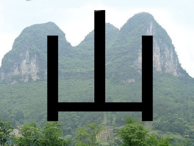
Now, in Japanese the word for “mountain” is yama.
So in this case, the Japanese decided to borrow the character山from Chinese, but to pronounce it differently: yama.
However, this isn’t the end of the story!
The Japanese did decide to borrow the pronunciation from the original Chinese, but only to use it when that character is used in compound words.
So, in this case, when the character 山 is part of a compound word, it is pronounced as san/zan – clearly an approximation to the original Chinese pronunciation.
Here’s the kanji on its own:
山は… Yama wa… The mountain….
And here’s the kanji when it appears in compound words:
火山は… Kazan wa The volcano…
富士山は… Fujisan wa… Mount Fuji….
To recap, every kanji has at least two pronunciations.
The first one (the so-called訓読み kun'yomi or “meaning reading”) has an original Japanese pronunciation, and is used with one kanji on it’s own.
The second one (called音読み on'yomi or “sound-based reading”) is used in compound words, and comes from the original Chinese.
Makes sense, right? 😉
In Japan, there’s an official number of kanji that are classified for “daily use” (常用漢字joyō kanji) by the Japanese Ministry of Education – currently 2,136.
(Although remember that the number of actual words that you can form using these characters is much higher.)
So now… if you wanted to actually learn all these kanji, how should you go about it?
To answer this question, Luca’s going to give us an insight into how he did it.

How I Learnt Kanji
I started to learn kanji more than 10 years ago at a time when you couldn't find all the great resources that are available nowadays. I only had paper kanji dictionary and simple lists from my textbook.
What I did have, however, was the memory of a fantastic teacher.
I studied Chinese for two years in college, and this teacher taught us characters in two helpful ways:
- He would analyse them in terms of their radicals and other components
- He kept us motivated and interested in the process by using fascinating stories based on etymology (the origin of the characters)
Once I’d learnt to recognise the 214 radicals which make up all characters – the building blocks of Chinese characters – it was then much easier to go on and learn the characters and the words themselves.
It’s back to the earlier analogy of dividing the word “telephone” into tele and phone.
But here’s the thing – knowing the characters alone isn’t enough. There are too many, and they’re all very similar to one another.
If you want to get really good at the language, and really know how to read and how to write in Japanese, you need a higher-order strategy.
The number one strategy that I used to reach a near-native ability in reading and writing in Japanese was to learn the kanji within the context of dialogues or other texts.
I never studied them as individual characters or words.
Now, I could give you a few dozen ninja tricks for how to learn Japanese kanji. But the one secret that blows everything else out of the water and guarantees real success in the long-term, is extensive reading and massive exposure.
This is the foundation of the StoryLearning® method, where you immerse yourself in language through story.
In the meantime, there are a lot of resources both online and offline to learn kanji, each of which is based on a particular method or approach (from flashcards to mnemonic and so on).
The decision of which approach to use can be made easier by understanding the way you learn best.
Do you have a photographic memory or prefer working with images? Do you prefer to listen to audio? Or perhaps you prefer to write things by hands?
You can and should try more than one method, in order to figure out which works best for you.
(Note: You should get a copy of this excellent guide by John Fotheringham, which has all the resources you’ll ever need to learn kanji)
FAQs About How To Write In Japanese
What is the correct way to write in Japanese?
Japanese is made of three written systems; thus, the correct way to write in Japanese is to use hiragana, katakana, and kanji together. Beginners can start with hiragana and add katakana and kanji as they learn more.
What is the ABC's in Japanese?
Japanese is made of 46 characters (compared to English’s 26). They are: あ, い, う, え, お, か, き, く, け, こ, さ, し, す, せ, そ, た, ち, つ, て, と, な, に, ぬ, ね, の, は, ひ, ふ, へ, ほ, ま, み, む, め, も, や, ゆ, よ, ら, り, る, れ, ろ, わ, を, ん
How is Japanese text written?
Japanese text is written in a combination of hiragana, katakana, and kanji. Hiragana are phonetic “letters” used to spell words. Katakana are phonetic characters used specifically for foreign or loan words. Kanji are more complex characters that represent an entire word or idea.
How do you type in Japanese text?
You can type in Japanese by installing a Japanese keyboard/IME (which is short for “input method editor,” indicating that it is a program that can change how you input things into the computer) onto your mobile device or computer.
On Windows, this will be located in Settings > Time and Language > Region and Language > Add a Language, for example.
Once the IME is installed, using it is generally as simple as clicking on it and selecting “Japanese” instead of English.
Is it worth it to learn to write in Japanese?
Learning to write in Japanese is absolutely worth it! Writing is one of the fastest ways to improve your reading comprehension, grammar, and vocabulary. It also helps you to engage with others more easily when speaking is not an option.
Summary Of How To Write In Japanese
So you’ve made it to the end of this guide on how to write in Japanese!
See – I told you it wasn’t that bad! Let’s recap what we’ve covered.
Ordinary written Japanese employs a mixture of three scripts:
- Kanji, or Chinese characters, of which there are officially 2,136 in daily use (more in practice)
- 2 syllabic alphabets called hiragana and katakana, containing 42 symbols each
In special cases, such as children’s books or simplified materials for language learners, you might find everything written using only hiragana or katakana.
But apart from those materials, everything in Japanese is written by employing the three scripts together. And it’s the kanji which represent the cultural and linguistic challenge in the Japanese language.
If you want to become proficient in the language and know how to write in Japanese you have to learn all three!
Although it seems like a daunting task, remember that there are many people before you who have found themselves right at the beginning of their journey in learning how to write in Japanese.
And every journey begins with a single step.
So what are you waiting for?
The best place to start is to enrol in Japanese Uncovered. The course includes a series of lessons that teach you hiragana, katakana and kanji. It also includes an exciting Japanese story which comes in different formats (romaji, hiragana, kana and kanji) so you can practice reading Japanese, no matter what level you're at right now.
If you’re ready to get started, click here for a 7-day FREE trial.
– – –
It’s been a pleasure for me to work on this article with Luca Toma, and I’ve learnt a lot in the process.
Now he didn’t ask me to write this, but if you’re serious about learning Japanese, you should consider hiring Luca as a coach. The reasons are many, and you can find out more on his website: JapaneseCoaching.it

– – –
Do you know anyone learning Japanese? Why not send them this article, or click here to send a tweet.

Olly Richards
Creator of the StoryLearning® Method
Olly Richards is a renowned polyglot and language learning expert with over 15 years of experience teaching millions through his innovative StoryLearning® method. He is the creator of StoryLearning, one of the world's largest language learning blogs with 500,000+ monthly readers.
Olly has authored 30+ language learning books and courses, including the bestselling "Short Stories" series published by Teach Yourself.
When not developing new teaching methods, Richards practices what he preaches—he speaks 8 languages fluently and continues learning new ones through his own methodology.
